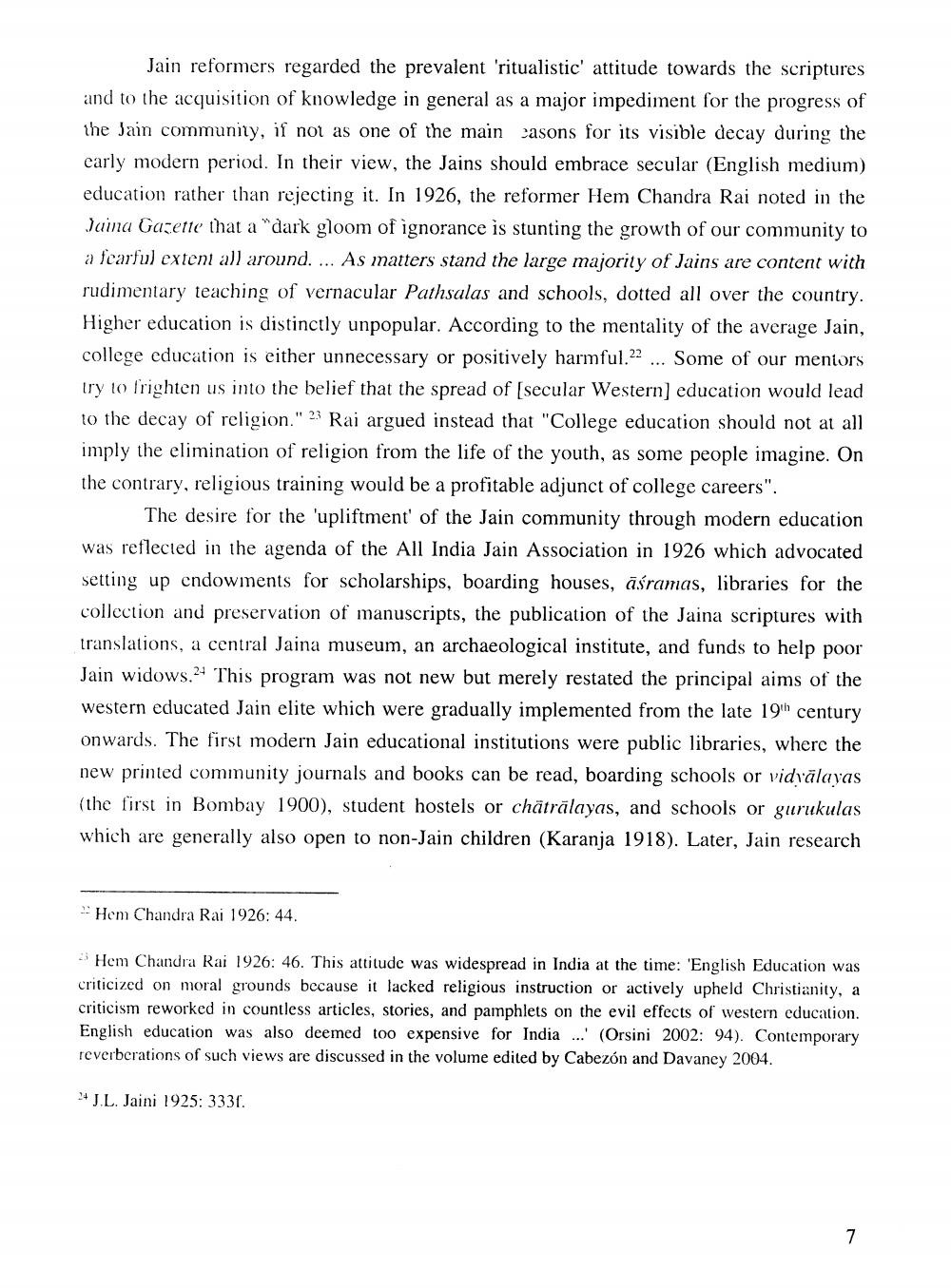________________
Jain reformers regarded the prevalent 'ritualistic' attitude towards the scriptures and to the acquisition of knowledge in general as a major impediment for the progress of the Jain community, if not as one of the main casons for its visible decay during the early modern period. In their view, the Jains should embrace secular (English medium) education rather than rejecting it. In 1926, the reformer Hem Chandra Rai noted in the Jaina Gazette that a "dark gloom of ignorance is stunting the growth of our community to a fearful extent all around. ... As matters stand the large majority of Jains are content with rudimentary teaching of vernacular Pathsalas and schools, dotted all over the country. Higher education is distinctly unpopular. According to the mentality of the average Jain, college education is either unnecessary or positively harmful."... Some of our mentors try to frighten us into the belief that the spread of [secular Western] education would lead to the decay of religion." " Rai argued instead that "College education should not at all imply the elimination of religion from the life of the youth, as some people imagine. On the contrary, religious training would be a profitable adjunct of college careers".
The desire for the 'upliftment' of the Jain community through modern education was reflected in the agenda of the All India Jain Association in 1926 which advocated setting up endowments for scholarships, boarding houses, asramas, libraries for the collection and preservation of manuscripts, the publication of the Jaina scriptures with translations, a central Jaina museum, an archaeological institute, and funds to help poor Jain widows. This program was not new but merely restated the principal aims of the western educated Jain elite which were gradually implemented from the late 19" century onwards. The first modern Jain educational institutions were public libraries, where the new printed community journals and books can be read, boarding schools or vidyalayas (the first in Bombay 1900), student hostels or chatralayas, and schools or gurukulas. which are generally also open to non-Jain children (Karanja 1918). Later, Jain research.
Hem Chandra Rai 1926: 44.
Hem Chandra Rai 1926: 46. This attitude was widespread in India at the time: 'English Education was criticized on moral grounds because it lacked religious instruction or actively upheld Christianity, a criticism reworked in countless articles, stories, and pamphlets on the evil effects of western education. English education was also deemed too expensive for India ... (Orsini 2002: 94). Contemporary reverberations of such views are discussed in the volume edited by Cabezón and Davancy 2004.
24 J.L. Jaini 1925: 3331.
7




